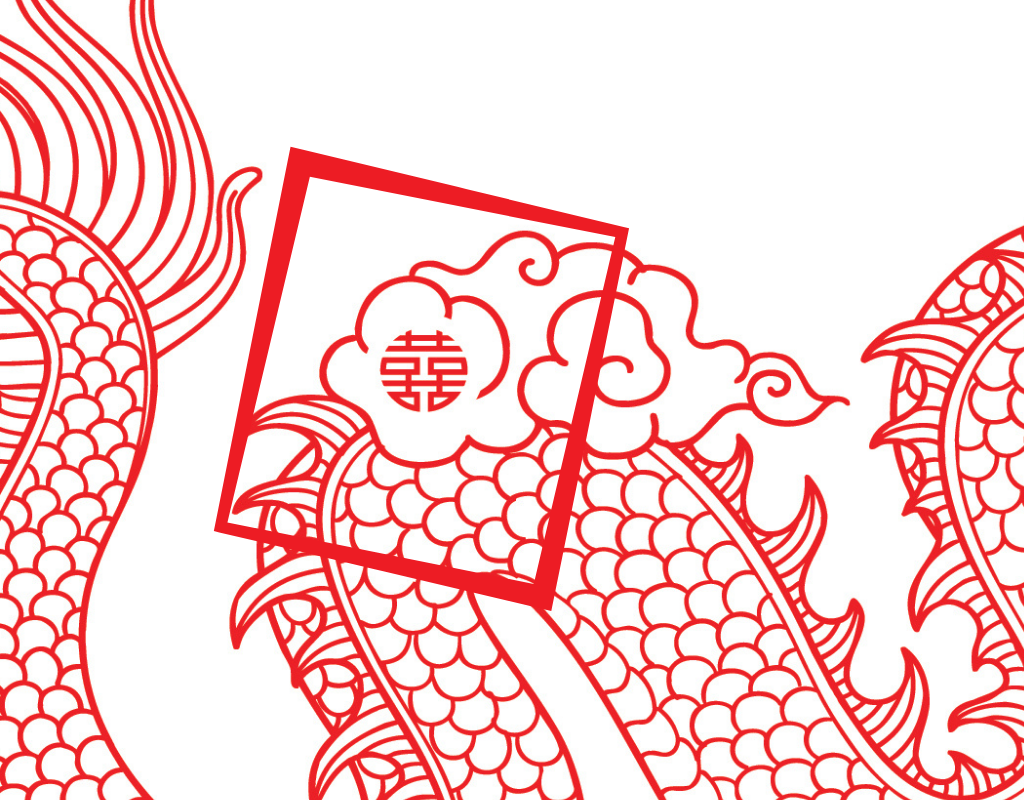
Written by Harry Rubin
If you’ve eaten at more than a few Chinese restaurants, chances are you’ve noticed some patterns in their names. You’ve seen your share of “Garden” and “Palace”, “Lucky” and “Dragon”, and you’ve probably found a lot of “Happiness”, too. There are a dozen or so eateries scattered around America independently called “Three Happiness”, “Five Happiness”, or “Six Happiness”, but dwarfing them all are a number called “Double Happiness”. It would seem that Double Happiness has some significance (and it does!) So what exactly is double happiness?
What is Double Happiness?
囍 is Double Happiness. Can’t read Chinese? Not a problem—囍 isn’t a Chinese character but a decorative symbol made up of two Chinese characters. Happiness (喜, xǐ), written twice, creates囍, representing twice the happiness. The Double Happiness symbol has traditionally been associated with marriage, the matching pair of characters conveying wishes for happiness to the new couple. Said to have been created for the marriage of the Emperor’s chancellor during the Song Dynasty, in the thousand or so years since, Double Happiness has become ubiquitous in the world of Chinese weddings.

Today, the symbol for Double Happiness has expanded beyond weddings into general wishes for happiness and quality. You’ll find 囍 on everything from luxury goods to cigarettes (see the front and back of a Chinese pack of cigarettes below)...not to mention every jar of oo'mämē Chile Crisp. (We’ll get to that later).

Five-fold Happiness
Double happiness is not alone—it’s just one of a series of characters and symbols commonly used in decoration. Together with the characters 福,禄,寿,and 财, Double Happiness (or the singular喜 ) completes the set known as “Five-fold Happiness.” Each has its own meaning: 福 (fú), represents luck; 禄 (lù), prosperity; 寿 (shòu), longevity; and 财 (cái), wealth. Much like Double Happiness and weddings, each of these characters were traditionally associated with specific events (福 and the New Year, for example), but have since expanded more broadly into general decorative arts and branding. You’ll also find the other four on products like cigarettes, though not quite as much as Double Happiness.
From Double to 88
Let’s go back to the restaurant names—you may have noticed that in addition to Double Happiness, there were restaurants called “Three”, “Five” and “Six Happiness” but no “Four Happiness”. More happiness is better, so why not double the Double Happiness to quadruple? The Chinese words for death (死) and four (四) sound similar (sǐ and sì), so the number four is traditionally avoided. However, double it once more, and you get eight, a very lucky number. While eight is lucky, 88 is doubly so, and not just because it has two eights. Due to its visual resemblance to 囍, 88 can also represent Double Happiness, making it especially auspicious. In the Chinese cultural sphere, 88 is used to number anything it can, from floors of skyscrapers to prices in supermarkets.

Double Happiness and oo'mämē
If you carefully inspect any jar of oo'mämē Chile Crisp, you’ll discover a circular “囍” woven into the artwork. What is the Chinese symbol for Double Happiness doing on every jar of oo'mämē Chile Crisp? Whether infused with the flavors of Fez, Oaxaca, Kerala, or Szechuan, the “囍” on each oo'mämē Chile Crisp honors the humble Chinese roots of the chile crisp condiment. Just as Double Happiness dates back to the Song dynasty, oo'mämē celebrates flavors and ingredients ingrained with centuries of local history—the fermented black soybeans found in our chile crisp follow the same fermentation methods as when the first “囍” was written and deliver a punch of savory umami. Much like marriage, the ideal eating experience is a happy one (all those restaurants are on to something). Each oo'mämē jar sealed with a “囍” contains our wishes for your own doubly happy culinary adventure, best shared with a friend.


Miles Skidmore on Feb 24, 2025
To the oomame.net webmaster, Thanks for the well written post!
Lon Dubose on Dec 10, 2025
Hello oomame.net webmaster, Your posts are always well received by the community.